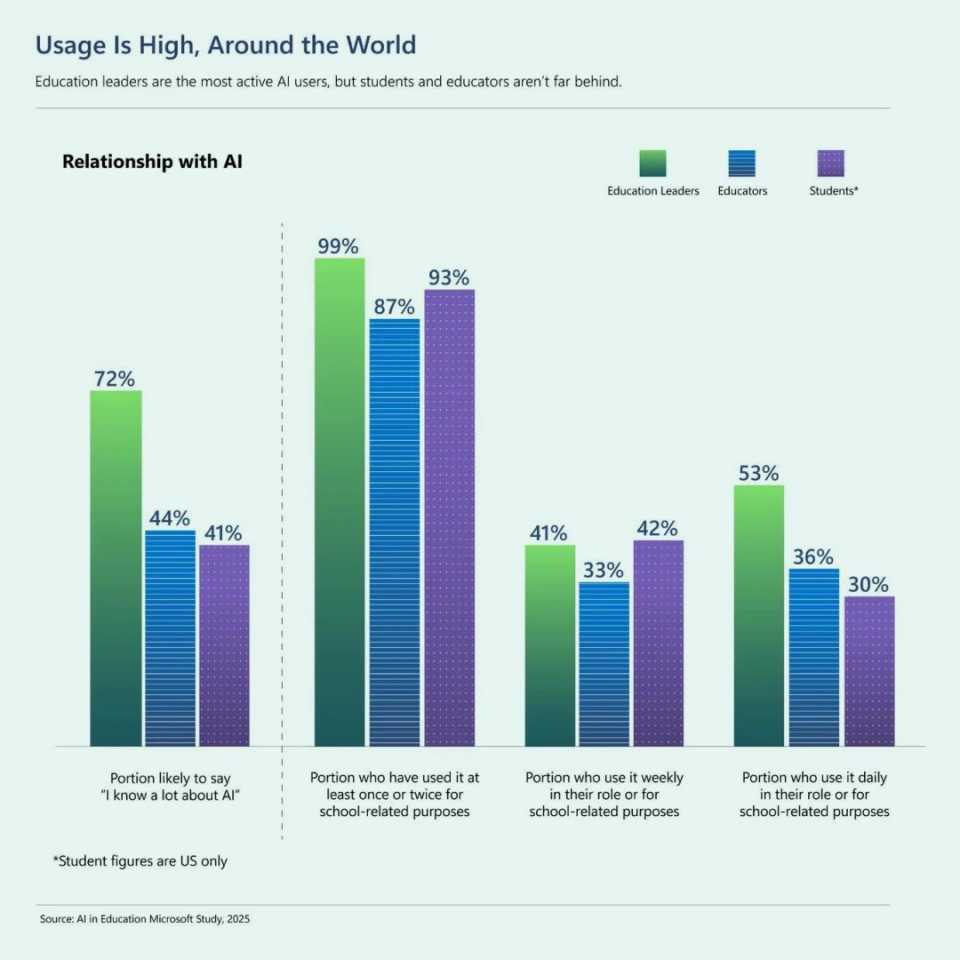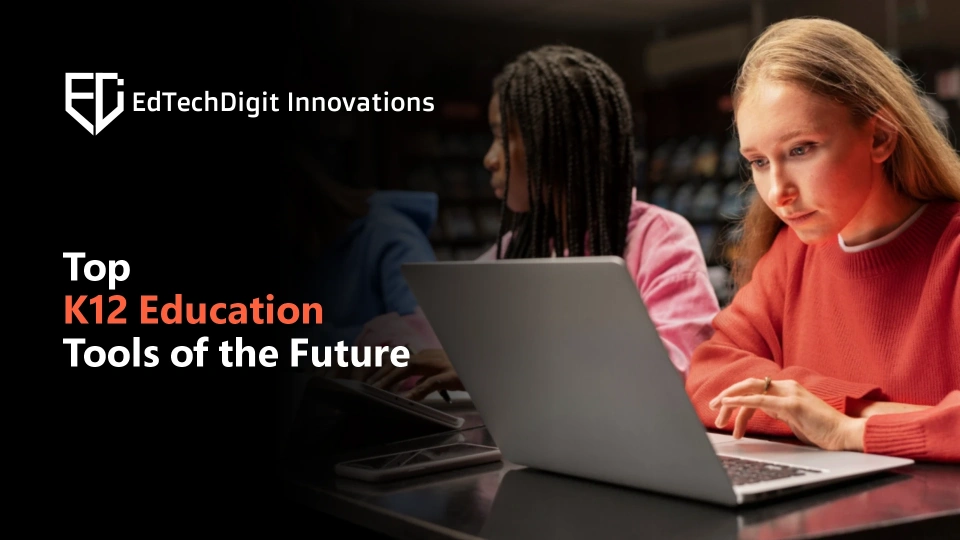Education has outgrown its old ties with the classroom setup. Today, artificial intelligence in education involves the application of AI technologies within the classroom and educational administration to enhance teaching and learning practices and address educational challenges. Product innovation emerges as a pivotal trend driving market traction in the realm of artificial intelligence within the K12 education sector. Major industry players are intensively focused on pioneering advanced solutions to fortify their market presence as well.

The conversation is no longer “if” but “how” as institutions consider what that means for students, educators, and institutions. To better understand what keeps them from accelerating widespread upskilling and training; it is imperative to understand AI adoption acting up as a major pivot and ways to conquer the teaching-learning forte’.
Is AI a Compliment to Traditional Learning?

AI usage is high in education with education leaders being the most active users. But, has AI training kept pace? Possibly not! Less than half of US students and global educators say they know a lot about AI. Internationally, 76% of leaders say that half or more of AI users at their institution have received AI training. Reflecting on the numbers; yet 45% of educators globally and 52% of US students admit they have not received any training (Microsoft 2025 AI in Education Report). This pulls out to another important aspect of K12 education tools usage and beyond. Let us explore.
AI Fluency as a Workforce Imperative- A Breakthrough Curriculum Add-on
Did you know PwC’s 2025 AI Jobs Barometer shows soaring demand for AI skills, slower growth in AI-exposed roles, and a rising wage premium trend for tech-savvy talent? This unfolds the hidden gem of AI fluency that amplified multitudinous career growth with massive occupational traction. There are some of the most-recent additions to the list of AI tools used in the education sector; that aims to power and amp up the entire process manifold. Let us explore in detail.
-
AI-powered Personal Tutors (Thinkster AI/ ScribeSense)
Real-time adaptation to each student’s pace, AI-driven analytics for teachers and parents, and round-the-clock availability for doubt-solving- these are some of the perks that can be earned via these AI-powered tutors. These personalized learning experiences stay with the learners across ages specifically for K12 education. Instant feedback on assignments and automated grading are some of the features that assist in faster learning and doubt clearing; yielding greater understanding without delay.
-
Gamified Edtech (Kahoot! 2.0/ Duolingo Max)
Leader boards, digital badges, and rewards for motivation; AI-enhanced adaptive quizzes, and multi-player learning sessions- all of this and much more attracts the gamified versions of higher education; that fosters lasting learning while turning lessons into challenges and puzzles to trigger the inquisitive brain of the learners.
-
Collaborative Learning (Miro Education/ Notion Study Hubs)
Learning in silos is a passe’! AI in education is all about collaboration and these tools encourages teamwork, communication; mimics real-world workplace collaboration; and seamlessly integrating learning with video conferencing. Co-editing assignments, brainstorm sessions on digital whiteboards, and hosting study sessions on virtual platforms offer a massive opportunity for higher education learners to collab and learn faster and foster longer retention.
-
Immersive VR Classrooms (Engage/ ClassVR)
Not restricted to the gaming world; Virtual Reality has entered the classrooms with a big bang! Increased engagement, better practical understanding, remote students experiencing ‘real classrooms’ virtually, and interactive visuals- all keep the learners hooked to the digital classrooms today.
-
Dashboard Embedding and Integration (Domo-Burbio Collab)
Curate actionable insights using pages of unstructured data such as school board meeting minutes, strategic plans, state grants, staff turnover, etc. It aims at embedding and integrating dashboards into its intelligence platform; using AI-powered tools to quickly deliver contextual insights for school district initiatives and discussions.
Fostering AI-Ready Campus- How?
Going beyond textbooks is the norm and teachers and facilitators are making every possible enhancement to foster and amplify K12 education experience a worthwhile one. Lets see what AI has to offer the teaching fraternity; that commands the wagon of K12 education tool far and wide.
- TurboLearn- An AI-powered assistant that transforms lectures, videos, PDFs, and notes into polished study material; auto-generates flashcards and visual diagrams; syncs across web and mobile devices
- Fetchy- A generative AI-powered platform designed for educators to simplify and streamline the myriads of tasks educators face; including creating engaging lessons, generating newsletters, crafting professional emails, and much more.
- Socrat- An AI tool that creates classes, manages assignments, and tracks students’ progress; all while keeping the communication flow open and engaging students with AI-driven tools to improve their learning outcomes.
- Cognii- An AI-based product for K12 and higher education institutions to help students form open-format responses and improve critical thinking skills. The tool offers one-on-one personalized tutoring; with adaptive personalization for each student.
- Ivy Chatbot- A set of chatbot AI tools that were specifically curated for universities and colleges; to facilitate seamless planning of recruitment campaigns through gathered data. With features such as Live chat, SMS nudging; integration with Facebook, ERP, CRM, and SIS; and yielding smarter interactions with users- you can rely on Ivy as an AI tool for education.
This is surely not the end! Artificial intelligence is poised to revolutionize the educational sector by multiplying the capabilities of teachers and learner’s manifold. Alleviating administrative burden, creating immersive learning environments, and hyper-personalization of what K12 education tools revolution would look like. Stay tuned as the Edtech evolves way beyond our expectations!

